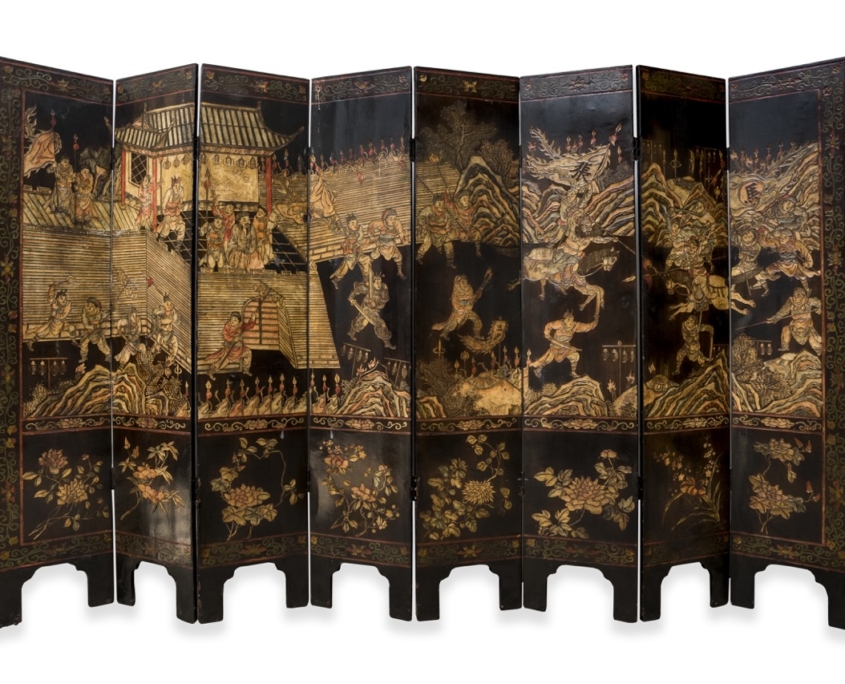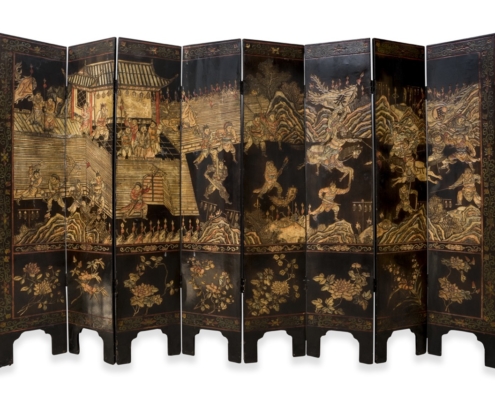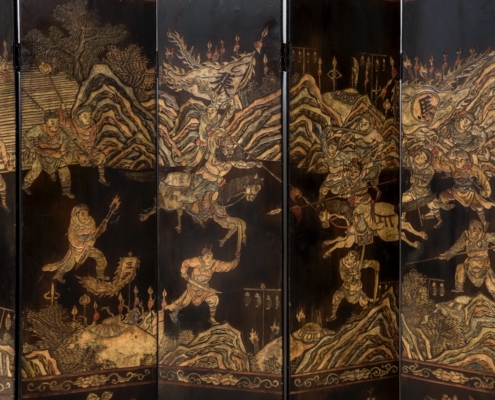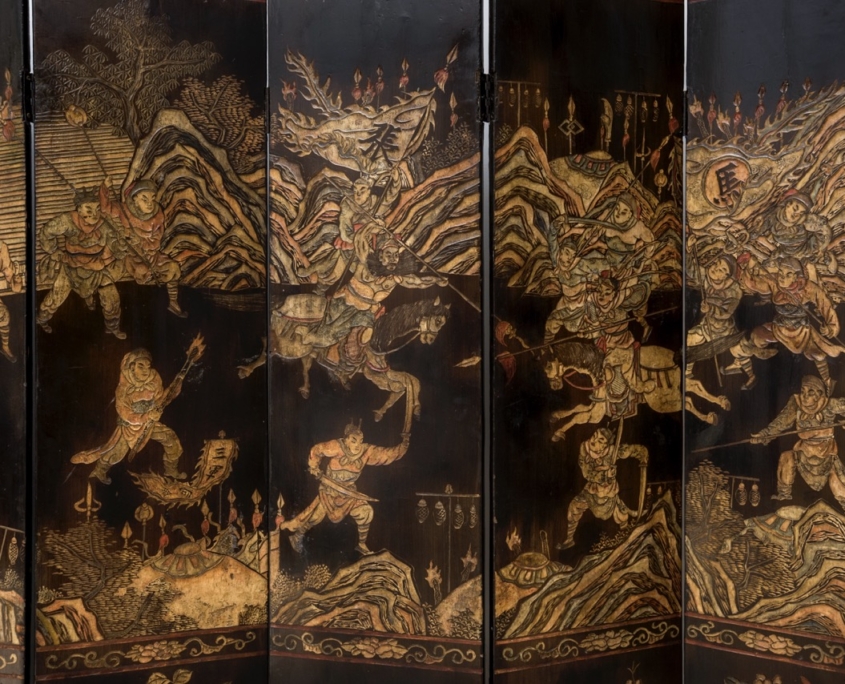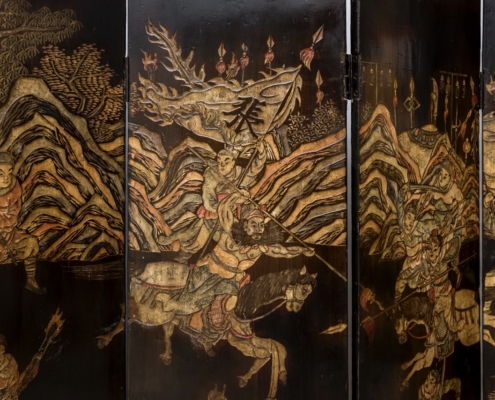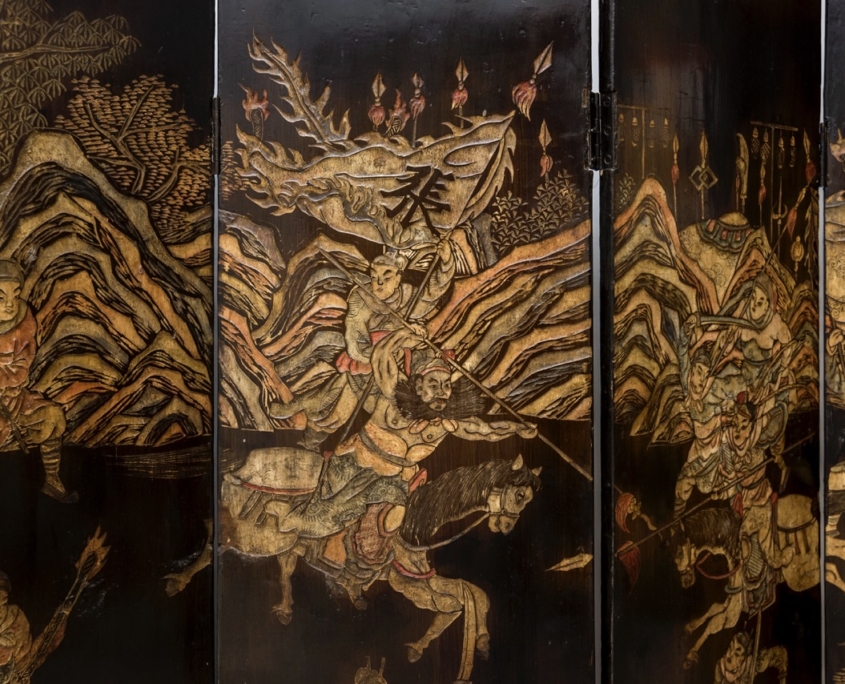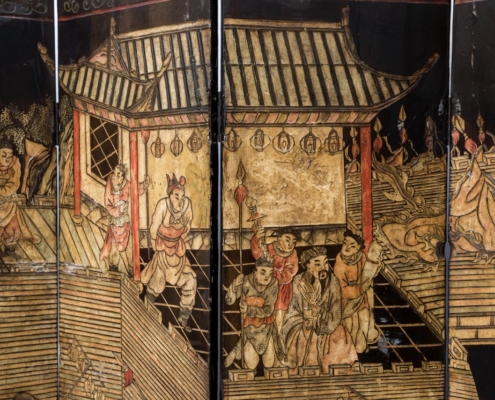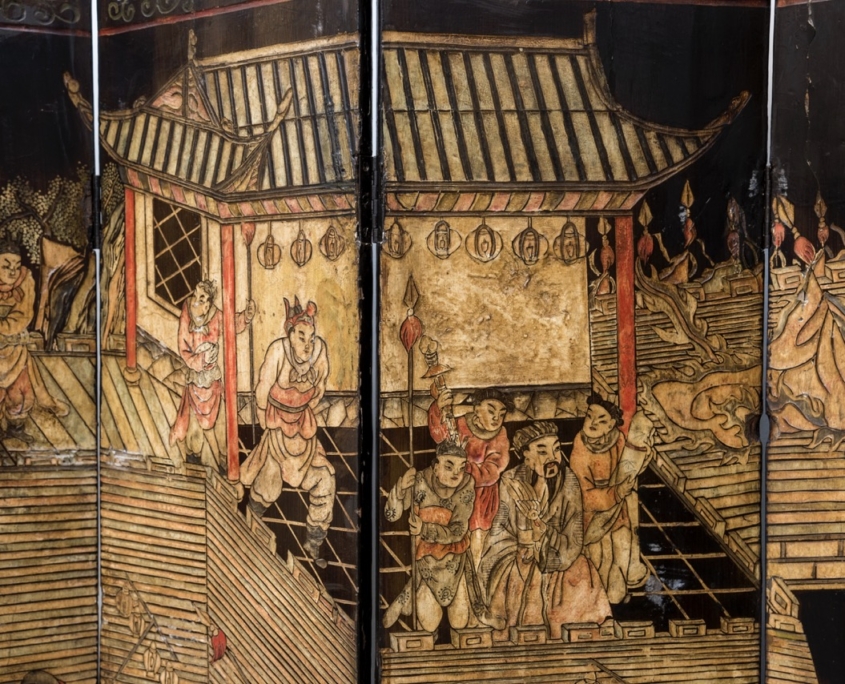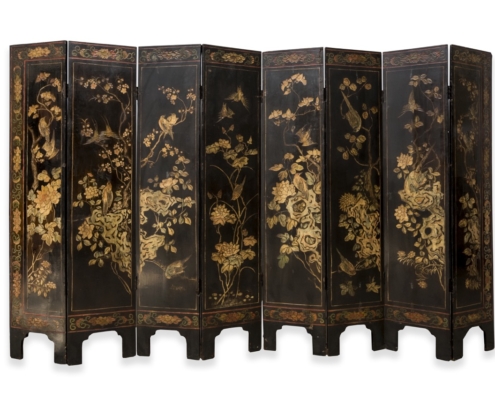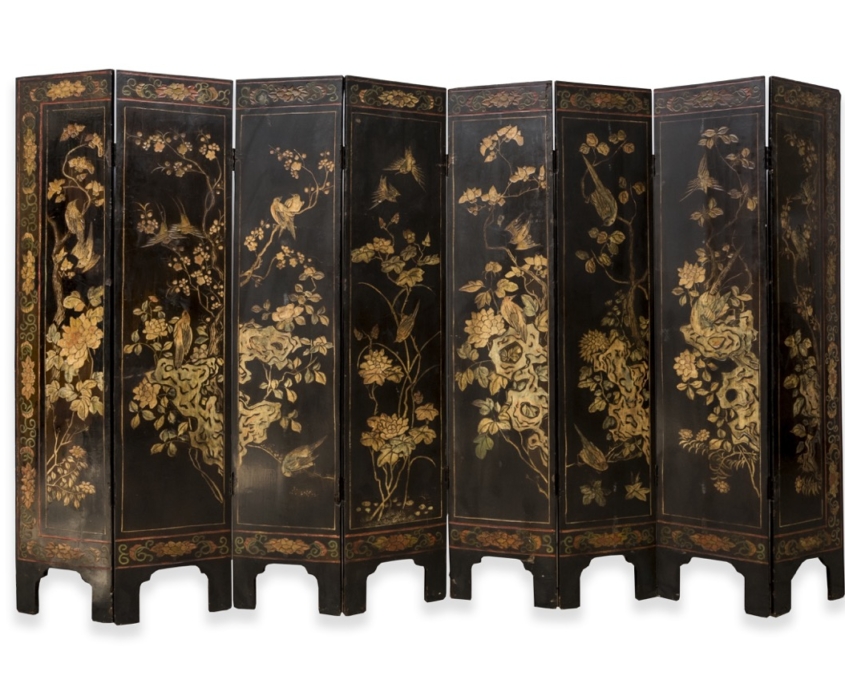The name “Coromandel” comes from the East Indian coast of the same name. In the 18th century, trade between Asia and Europe boomed, and wealthy European merchants ordered various Chinese items, lacquers, porcelain, and silks. From China they were transported on junks to India, to counters like Pondicherry or Kulikat. The transport companies, established on the Coromandel coast, then transported large chests and screens by boat to Europe. For European customers, these lacquers came from Coromandel, without details on their true origin.
The uniqueness of Coromandel lacquers is due to the decorative revival they inaugurate. The decoration is engraved and results from meticulous work. The wooden support is covered with linen or hemp. The lacquer, often black, sometimes brown, is applied in successive layers on the support. Incisions are then made, and the exposed surfaces are painted with very bright colors, but which over time have taken on softer tones. This Chinese technique, called kuan cai, has been practiced since the 16th century. Coromandel lacquered screens often feature a palace and figures on one side, birds and flowers on the other.




